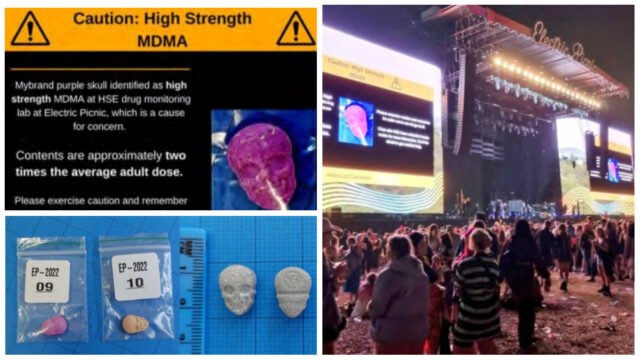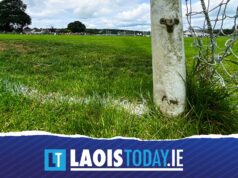The HSE National Social Inclusion Office has published their findings from Ireland’s first ‘back of house’ drug testing pilot programme – which was carried out at Electric Picnic this year.
The pilot programme initially took place at Electric Picnic between September 2 and 4 as part of the HSE ‘Safer Nightlife’ harm reduction campaign.
The aim of the pilot was to access, test and identify substances in a festival setting, alert the public, harm reduction services and onsite medics to any dangerous substances and gain insights on drug trends.
The pilot involved people anonymously surrendering substances in HSE bins which were rapidly analysed by the HSE National Drug Treatment Centre Laboratory using an on-site temporary laboratory.
In total, 46 samples of drugs were surrendered to the HSE over the three-day period which led to the HSE issuing three different risk communications relating to concerns around a particular MDMA product, high strength powders and crystals and the emergence of a new substance 3-CMC (a cathinone drug which can cause significant mental health problems).
Speaking about the report, Professor Eamon Keenan, HSE National Clinical Lead Addiction Services, said: “While this report represents a relatively small number of samples numerically, we must recognise the importance of this pilot project and our findings.
“The pilot is a real example of cross sectoral collaboration, where all agencies agreed on the need to collaborate to identify emerging drug trends, with an aim of protecting the health of people attending the event.
“This programme is the first of its kind in Ireland, whereby the HSE accessed substances from people who use drugs to conduct real-time analysis for the purpose of sharing risk communications at a festival.
“As a result, the HSE were able to quickly share accurate information with the public to encourage harm reduction discussions both in person and online over the course of the event.
“We obtained quantitative estimates of MDMA being used in Ireland which we have never had access to before, while we engaged with hidden and niche user groups whom we otherwise would not have contact with through traditional addiction services.”
The project confirms for the first time that high strength MDMA products are also appearing in Ireland similar to the rest of Europe, which significantly increases the risks for people.
Five MDMA, also known as escstacy, powders were confirmed as almost pure MDMA which creates harm reduction challenges.
The diversity of MDMA products have also been observed with six identical-looking MDMA ‘Mybrand’ skull pills found to contain a range of contents from 36mg of MDMA to 235mg of MDMA.
This confirms that people cannot be sure which product may be higher risk.
A total of 12 substances submitted to the HSE were considered as ‘new psychoactive substances’, three of which have never been found before in Ireland.
Nicki Killeen, Emerging Drug Trends Project Manager, HSE National Social Inclusion Office, said: “From a research perspective, it is extremely interesting that we accessed such diversity in the drug samples including very novel compounds.
“These results provide us with further insight on the changing drug landscape in Ireland. Based on this, it is clear that there is a need to further expand this approach to include more frequent analysis in new settings.
“As the drug market evolves, Ireland must prepare for possible changes and associated health threats with substance analysis having a central role in this process to help us identify concerns and respond at a faster rate to reduce harm.”
The report recommends a series of future actions such as engaging with the public to obtain feedback on the pilot and considering how the HSE can further access substances from people who use drugs for health purposes to expand on this approach.
The report was launched today at an online event with contributions from Minister Frank Feighan, Minister of State for Public Health, Wellbeing and the National Drugs Strategy and Detective Superintendent Sé McCormack from the Drugs and Organised Crime Bureau of An Garda Síochána, João Matias, scientific analyst on drug use, European Monitoring Centre for Drugs and Drug Addiction (EMCCDDA) and representatives from the HSE.
SEE ALSO – Laois Rugby Roundup: Portarlington and PortDara win two from two for the second week in a row

























